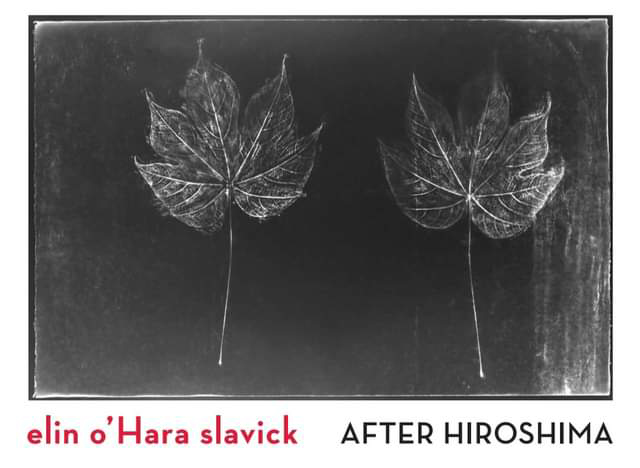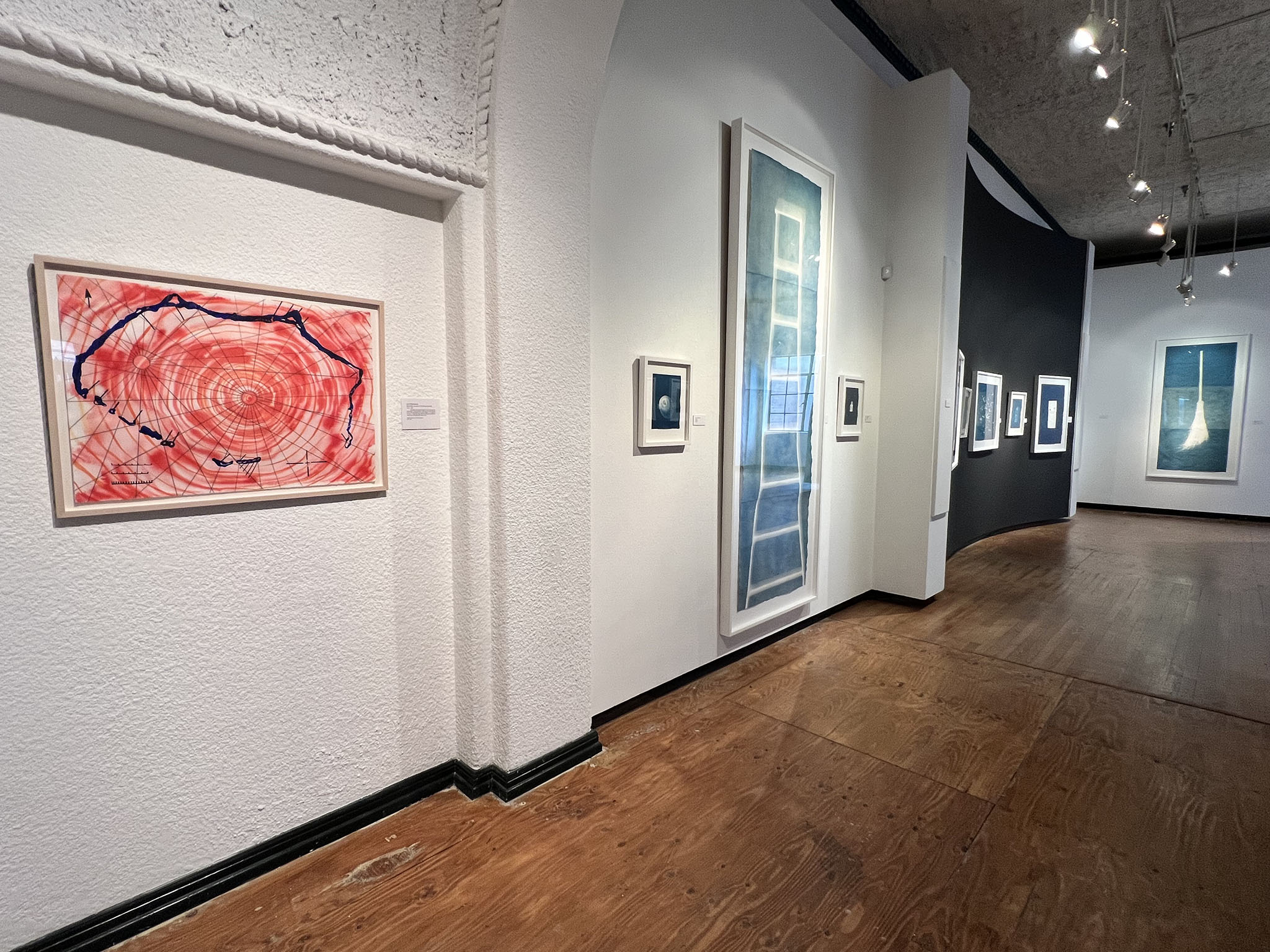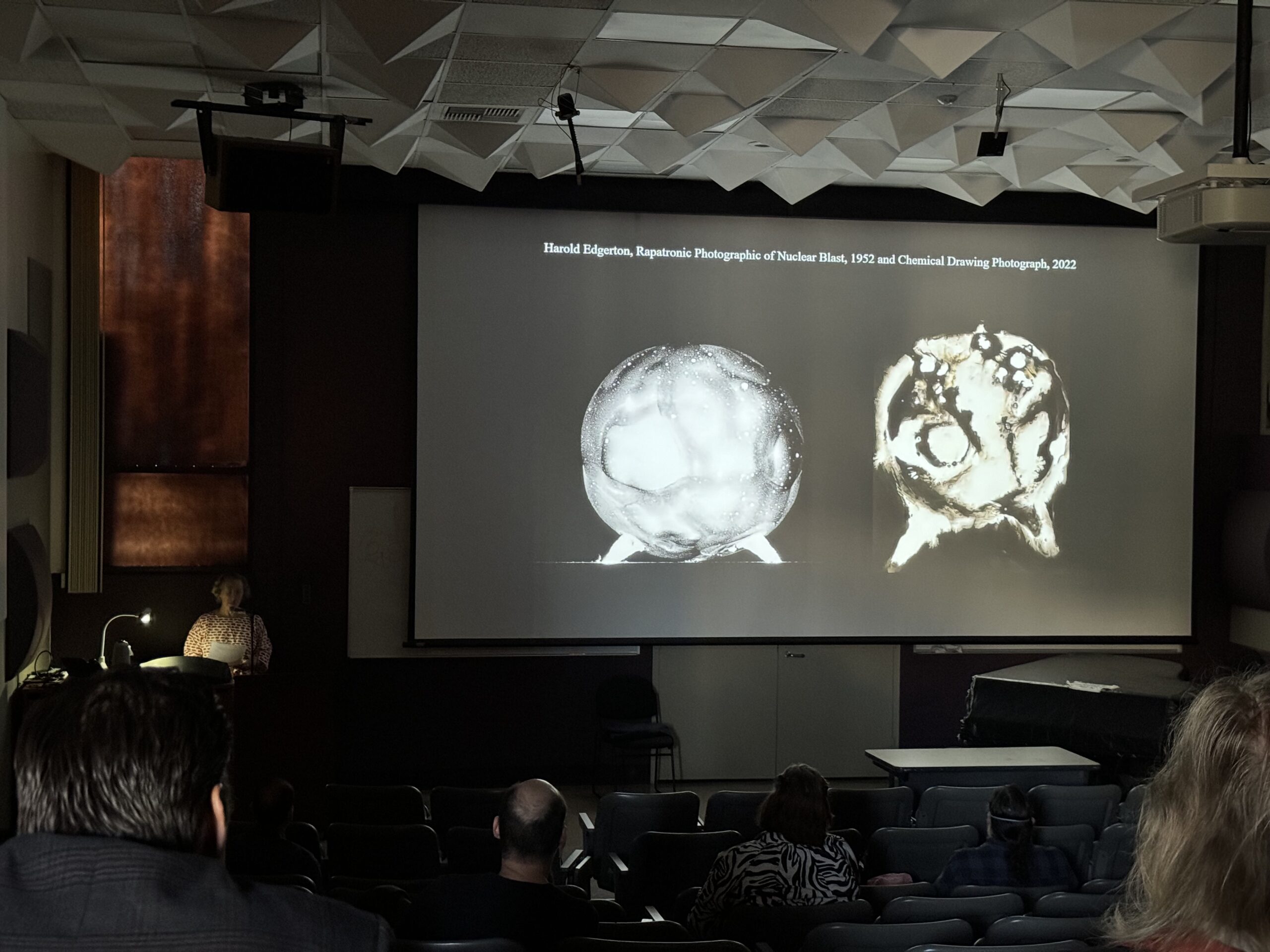

For the past two weeks, APG Advisory Board Member elin o’Hara slavick’s exhibition, “After Hiroshima (Part 2)” has been on display at the Santa Ana College Main Art Gallery. Showing until April 3rd, 2024, the exhibition features elin’s cyanotypes and photographic contact prints of rubbings of A-bombed artifacts, autoradiographs, photo-chemical drawings of atmospheric nuclear tests, essays, collages, and site-specific installations. Here is some snapshots from the Reception and the exhibition space.
ARTIST STATEMENT:
Since 2008, I have worked on After Hiroshima, Nagasaki and Fukushima, a series of cyanotypes and photographic contact prints of rubbings of A-bombed artifacts, autoradiographs, photo-chemical drawings of atmospheric nuclear tests, essays, collages, and site-specific installations. The work invites people to acknowledge the dangers, survival and aftermath regarding nuclear energy and weapons, atomic bombs, radioactive waste, and nuclear accidents. I attempt to make the invisible visible.
The first memory I have of Hiroshima is standing in Monument Square with my parents on Hiroshima Day, August 6, sometime in the 1970s, in my hometown of Portland, Maine. My father spoke. My mother spoke. I tried to speak. I had chosen a firsthand account of the atomic bombing, written by a woman who survived it as a little girl. I could barely read it, choking on her memories of melting skin, maggots in the brain, losing her mother, her father, the disappearance of the world as she knew it.
How can I, an American citizen born twenty years after the dropping of the atomic bombs, attempt to make art in response to Hiroshima? I have struggled with Adorno’s claim that “to write poetry after Auschwitz is barbaric” and Sebald’s assertion that, “…the construction of aesthetic or pseudo-aesthetic effects from the ruins of an annihilated world is a process depriving literature of its right to exist…The issue, then, is not to resolve, but to reveal the conflict.” Adorno and Sebald continued to write after Auschwitz and Hiroshima, inspiring many to fight, write, and make art against the barbarism of war. Working from within conflict to reveal it is what many artists do, exploring the clash between: representation and reality, genocide and humanity, beauty and the wreck of our world, truth and expression, form and content, meaning and feeling, visual pleasure and criticism.
The history of the atomic age is intertwined with that of photography. Uranium’s radioactivity was discovered through a photograph. In 1896, physicist Henri Becquerel placed uranium on a photographic plate to expose it to the sun. Because it was a cloudy day, he put the experiment in a drawer. The next day he developed the plate. To his amazement he saw the outline of the uranium on the plate that had never been exposed to light. He correctly concluded that uranium was spontaneously emitting a new kind of penetrating radiation and published a paper, “On the invisible rays emitted by phosphorescent bodies.” Following in Becquerel’s footsteps, I utilized autoradiography (capturing radioactive emissions from objects on x-ray film) by placing a fragment of an A-bombed tree on x-ray film for 10 days in light-tight conditions in the basement of the Hiroshima Peace Memorial Museum, processing the film and contact printing it in the darkroom. The lingering radiation in roof tile fragments, bamboo, and glass bottles, appears on the x-ray film much like Becquerel’s uranium on photographic plates. After Hiroshima develops the relationship between radiation, aftermath, exposure, and the visual language of photography.
The process and problem of exposure is central to my project. Countless people were exposed to the radiation of the atomic bomb. I expose already exposed A-bombed objects on x-ray film, but it is the radiation within them that causes the exposure. The cyanotypes of A-bombed artifacts render the traumatic objects as white shadows, atomic traces. The photographic contact prints of rubbings resemble x-rays, luminous negatives. It was critical to place the paper directly on the A-bombed surfaces and to rub a black wax crayon on the paper to make a “negative” imprint with which to make a “positive” photographic contact print. Tracing and touching the sites of survival, destruction, exposure, and history, seem to capture an essence of the trauma, a residual radiation, a lingering energy of such a profound event.








